Pair died in 500BC and went to next life in fur coats, but with their heads severed
26 September 2016
Skulls of ancient adult and child pair placed near kneecaps of grown-up, in bizarre burial puzzling archeologists.
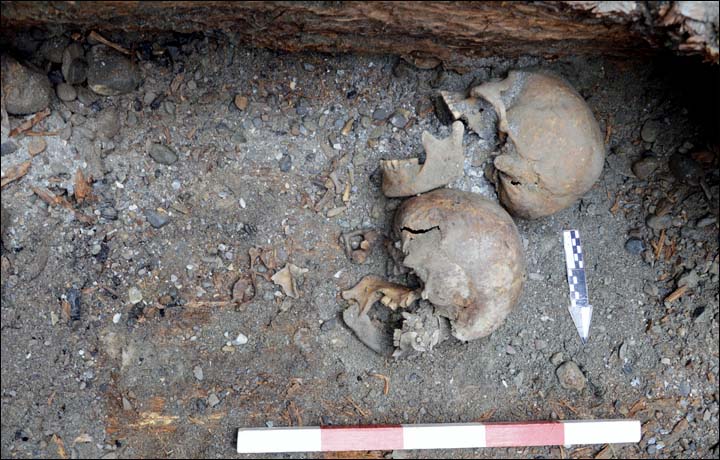
'And the heads are not missing at all. They were included in the burial.' Picture: Nikita Konstantinov
The newly-found burial from the ancient Pazyryk culture has produced a sight unknown to archeologists. Two skeletons were found in the riverside tomb - an adult and child, or teenager, but further investigation is needed to understand if they were male or female.
Remnants remain of fur garments: evidently the dead were dispatched to the afterlife warmly dressed against the Siberian cold in the Altai Mountains. Two small bronze mirrors and parts of a ceramic vessel were also discovered in a 2,500 year old grave that had been partially robbed in ancient times.
The discovery of this tomb at this Pazyryk burial ground - named Taldur II, close to Old Beltir village - provides some intriguing challenges to scientists.
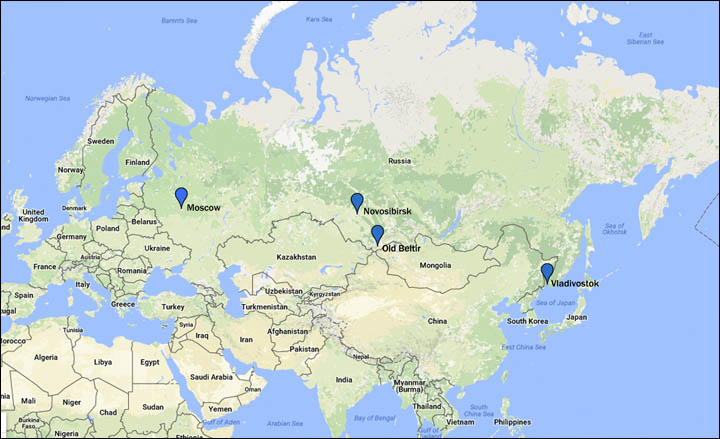
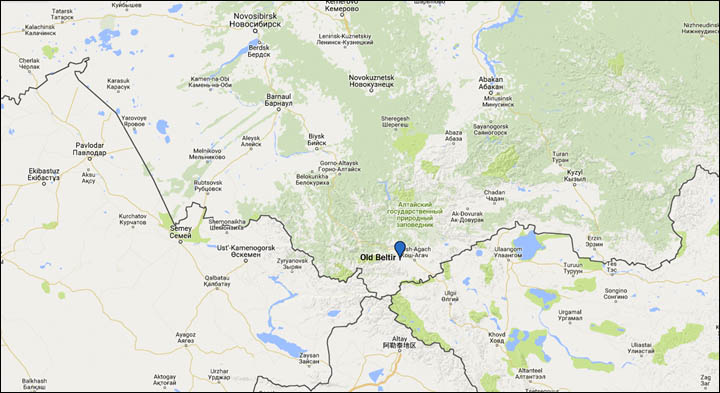
The discovery of this tomb at this Pazyryk burial ground - named Taldur II, close to Old Beltir village - provides some intriguing challenges to scientists. Pictures: The Siberian Times
Headless burials were a feature of this era, yet this one is completely different to anything seen before from the Pazyryks, a culturally advanced group that held sway at this time in southern Siberia.
Dr Nikita Konstantinov, of Gorno-Altaisk State University who headed the excavations, said: 'Burials without heads are quite common. Usually it is because of war. There was a widespread practice in which bowls were made of the heads of defeated enemies.'
It was the ultimate victor's justice: to eat from the skulls of enemies. 'But this is obviously a different case,' he insisted.
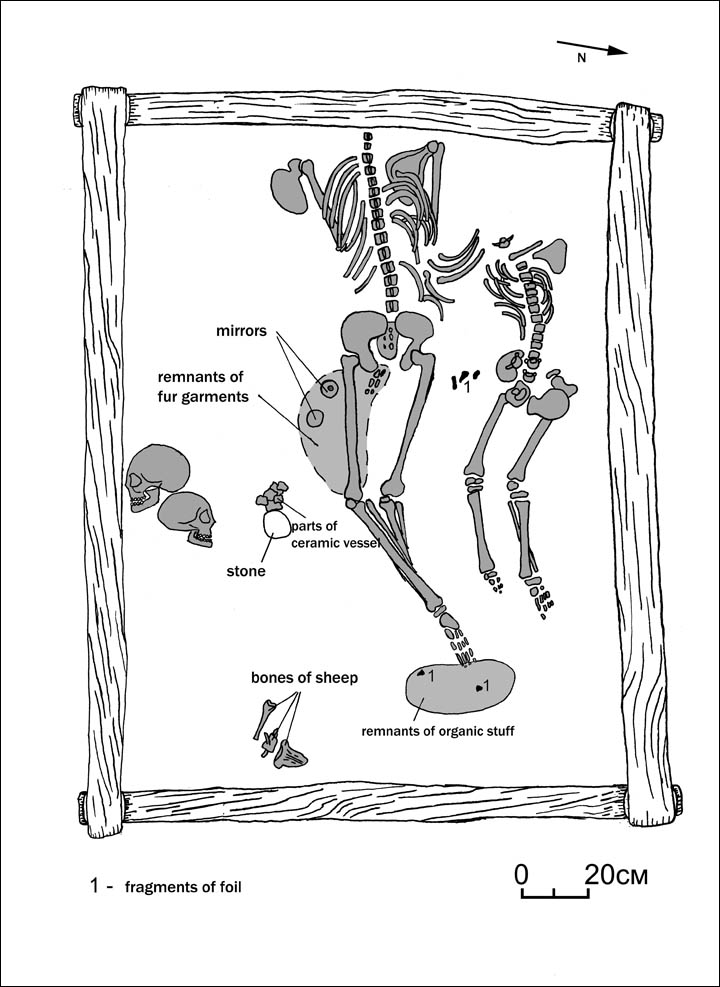
Skulls of ancient adult and child pair placed near kneecaps of grown-up, in bizarre burial puzzling archeologists. Picture: Nikita Konstantinov
In previous burials, the heads of these enemies were not buried in the same grave. And in this case, care was taken to send the deceased on their way well dressed and with the expected rituals of an honoured death.
Moreover, among their own people - rather than enemies in war - the Pazyryks generally took care not to distort the bodies of the diseased. 'There are also remains of the child and we have never previously seen burials of children without heads,' he said.
'And the heads are not missing at all. They were included in the burial.'
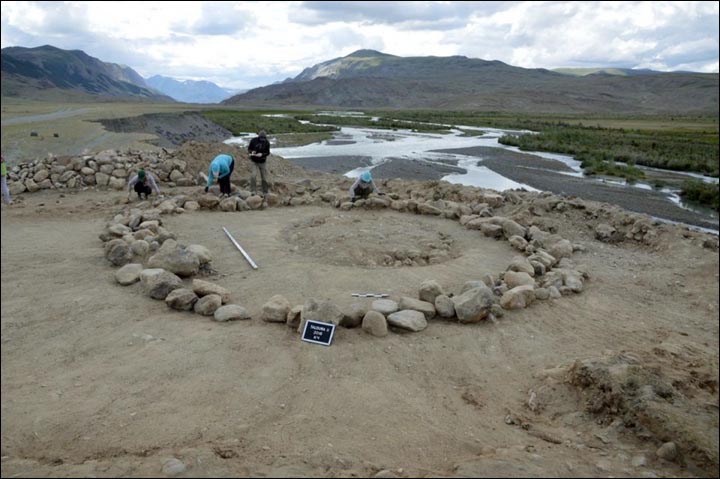
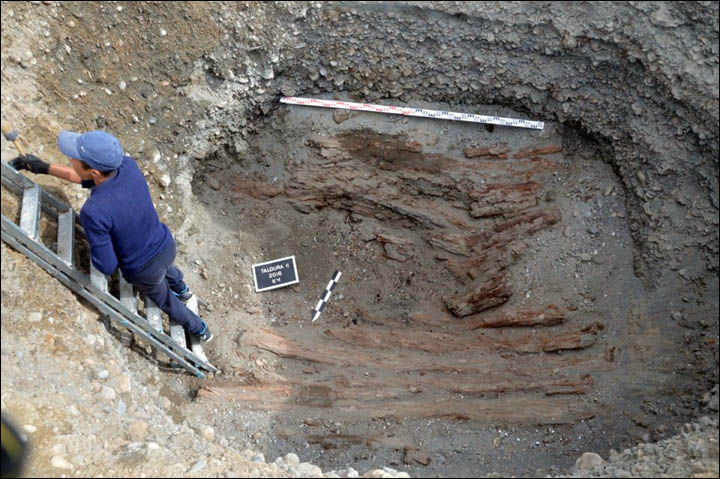
Two skeletons were found in the riverside tomb - an adult and child, or teenager, but further investigation is needed to understand if they were male or female. Pictures: Nikita Konstantinov
The archeologists have examined whether the grave-robbers in stealing ornaments buried with the dead might have severed the heads and placed them by the knees of the dead for unknown reasons.
Yet against this is the fact that the 'skeletons remained in anatomical order - which means that if the heads were moved after burial, it must have been when the ligaments had not decomposed' - so very soon post-death.
'And again there is a question: why would the robbers do this? Perhaps they were afraid that the dead could resurrect and revenge? Or was it an act of humiliation? Or some ritual?'
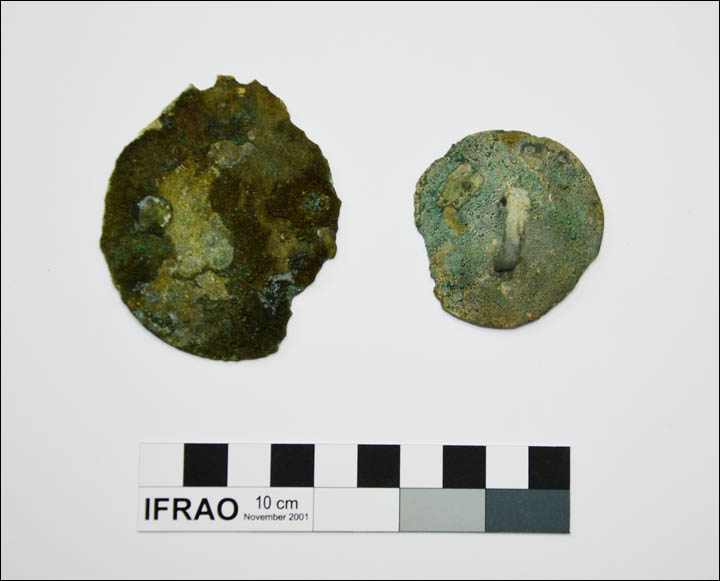
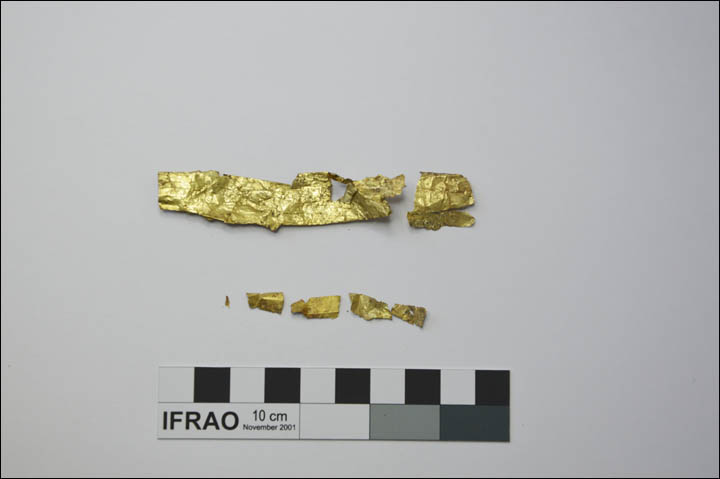
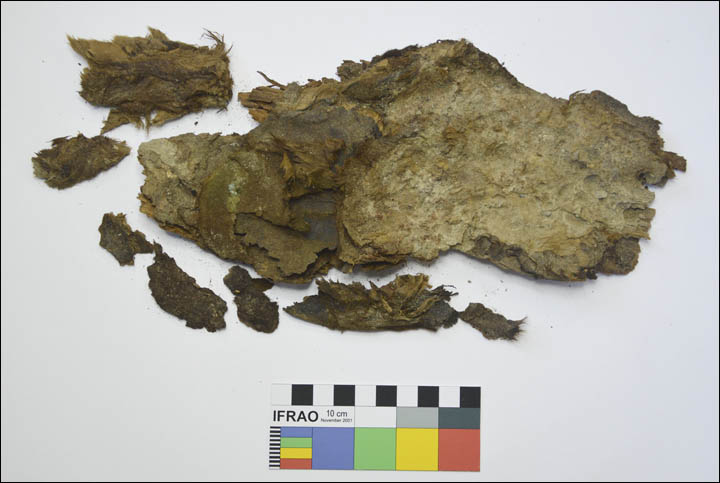
Bronze mirrors, golden foil and remnants of fur clothes were found in the tomb. Pictures: Nikita Konstantinov
Yet it is unique among Pazyryk burials. No such graves have been found before in Siberia, he says. The archeologists say the other version 'is that these people were buried initially with their heads cut off....and placed close to their knees'.
He admitted: 'We have no explanation why this was done so. We have no similar examples.'
The discovery has left 'more questions than answers', he acknowledged. 'We have no similar cases, so we need to investigate this one very thoroughly. We will continue the research of these skeletons.
'We need to determine their gender and (approximate) age. It is also important to study the traces on their cervical vertebrae to understand how and when the heads were cut off or separated in some other way. We hope to get the first results in December or January.'
No comments:
Post a Comment